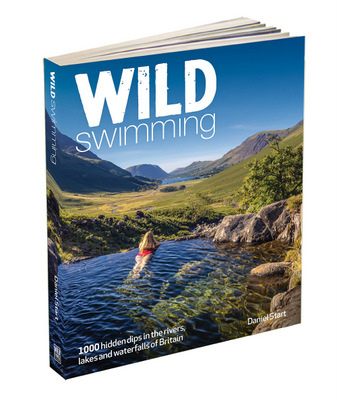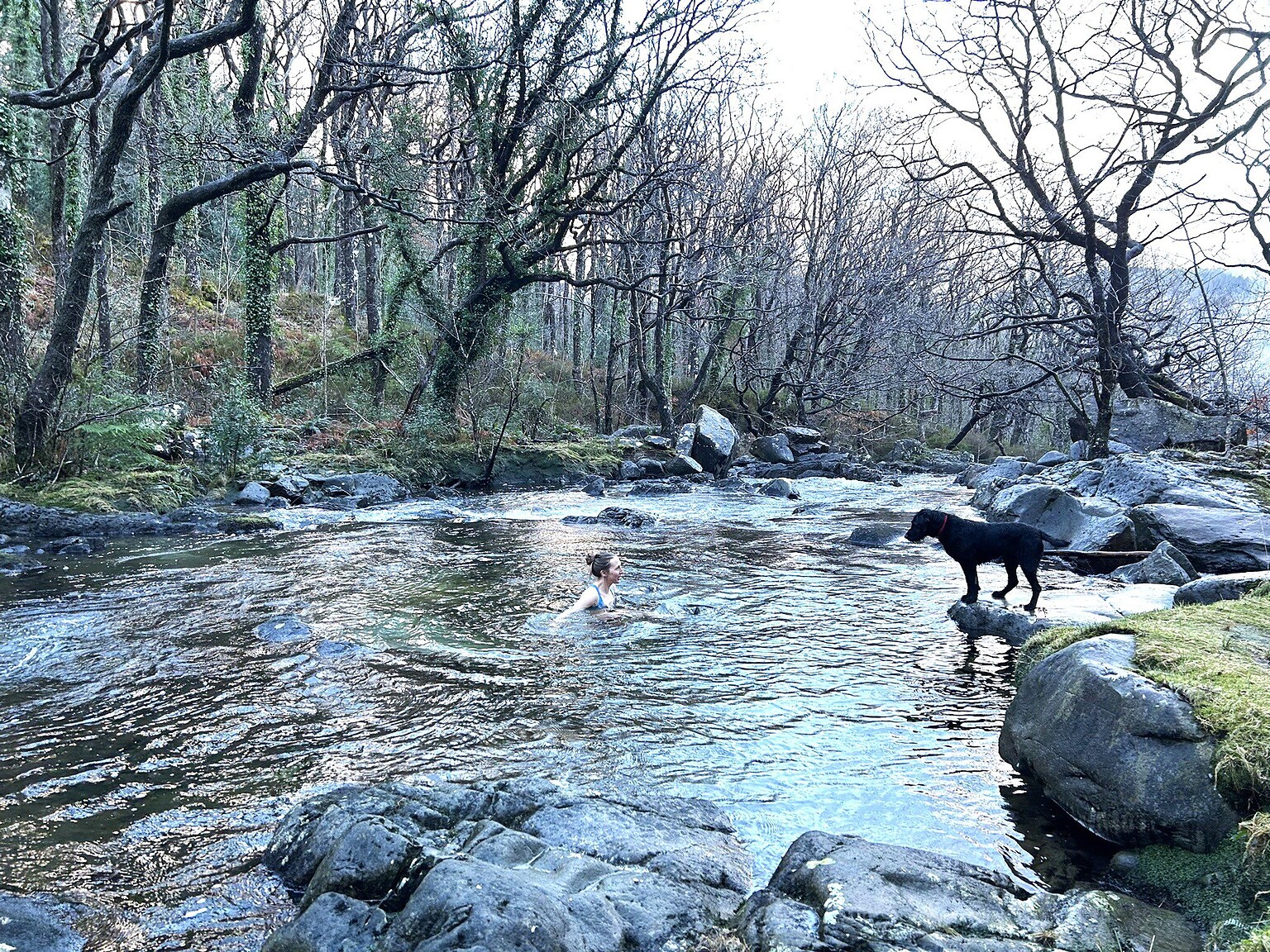
One of the most exciting things about wild swimming is that no two swims are ever the same. The landscape, the way the water moves and flows, the way it makes us feel are constantly changing.
The same can be said for swimming through the seasons. In summer, the water offers refreshing relief on hot days, often paired with picnics or lounging at the water’s edge. In winter, swimming has an altogether different character… there’s a rhythm, purpose, and energy that can be challenging, but also deeply rewarding and exhilarating.
Stepping into icy waters as frost clings to the trees and morning mist drifts over the river, transforms our world into a hushed, otherworldly space. As Roger Deakin wrote, “Swimming is a rite of passage, a crossing of boundaries: the line of the shore, the bank of the river, the edge of the pool, the surface itself.” Winter wild swimming is more than just a rush; it’s a ritual, a challenge and a restorative way to connect with nature.
Whether you’re a seasoned wild swimmer or curious about taking the plunge for the first time, read on to help you navigate winter swimming safely, choose the right gear, and discover why winter is the most magical time of year for wild swimming.
And if you’re ever stuck for where to go, the brand new third edition of Wild Swimming Britain is now available, with well over 1000 locations.
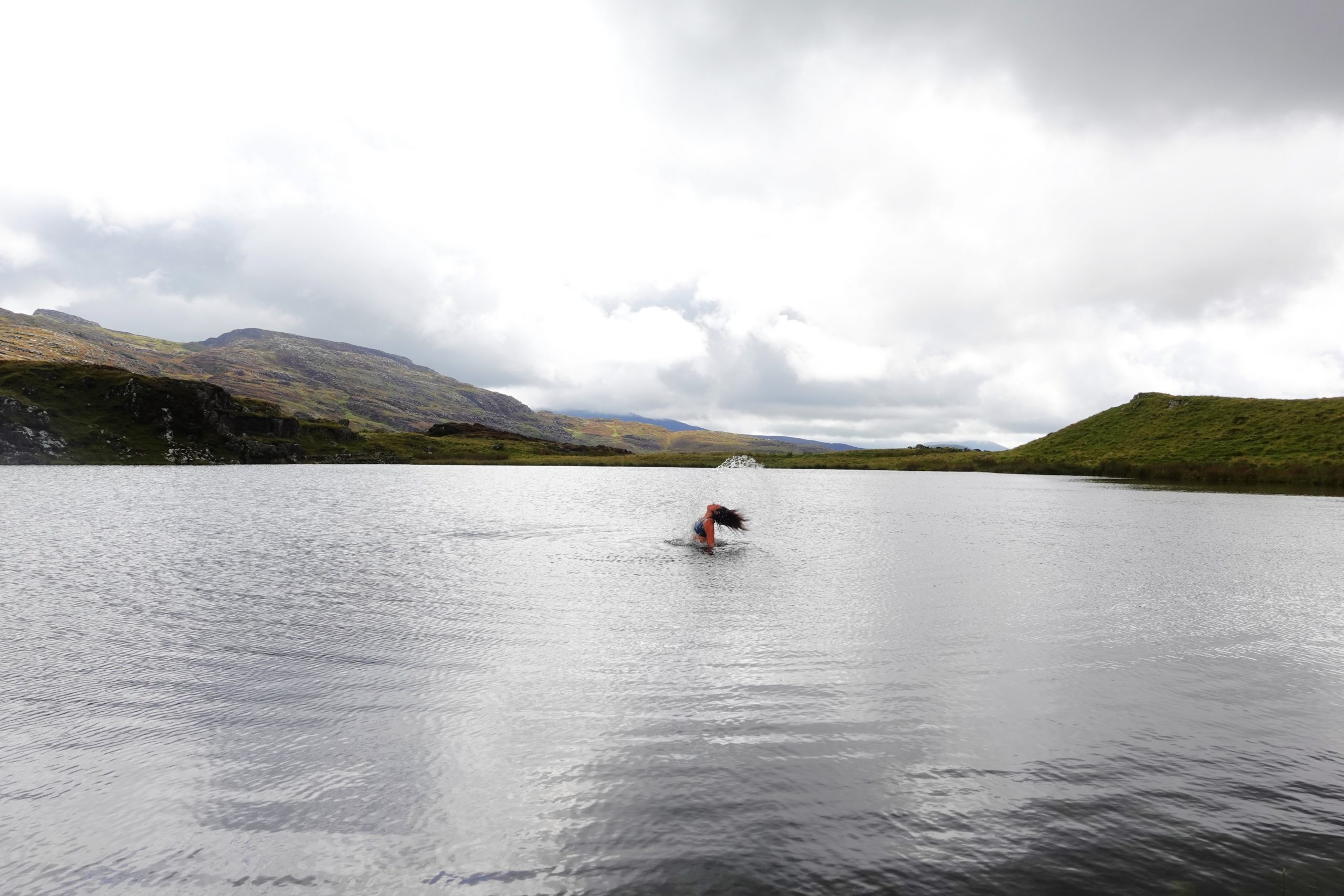
Why winter wild swimming? The benefits of cold water immersion
Cold water swimming is more than a thrill – it’s a wellness tonic. Research shows that brief immersion in icy water can:
- Boost mood and reduce stress, both during your swim and for a long period after leaving
the water - Strengthen immunity and improve circulation
- Increase mental clarity, focus and resilience. Facing a deadline or significant challenge? Go for a swim to help reset your mind and sharpen your concentration.
- Encourage mindfulness and connection with nature
For many, winter swimming is less about endurance and more about presence: the crisp air, the sound of water, the feel of the cold are a perfect escape from daily pressures and stress.
Safety first: essential winter swimming tips
Cold water is invigorating but can be dangerous if approached carelessly. Follow these safety guidelines:
- Cold shock & hypothermia: Enter gradually, keep your head above water and listen to your body. Know the signs of numbness, dizziness or shivering that doesn’t stop.
- Choose safe locations: Winter waters can be wild. Avoid strong currents and be sure to identify an easy exit point. Seek local guidance when swimming in new locations.
- Buddy Up: Never swim alone. Even experienced swimmers benefit from a friend in the water or watching from shore.
- Emergency Preparedness: Have a towel, warm clothing and a plan for rapid exit and warming up.
- Pollution: Check apps, such as Safer Rivers and Seas (SSRS), for up-to-date information about any pollution concerns. Avoid swimming 48 hours after heavy rain due to the risk of potential sewage release or agricultural run-off.
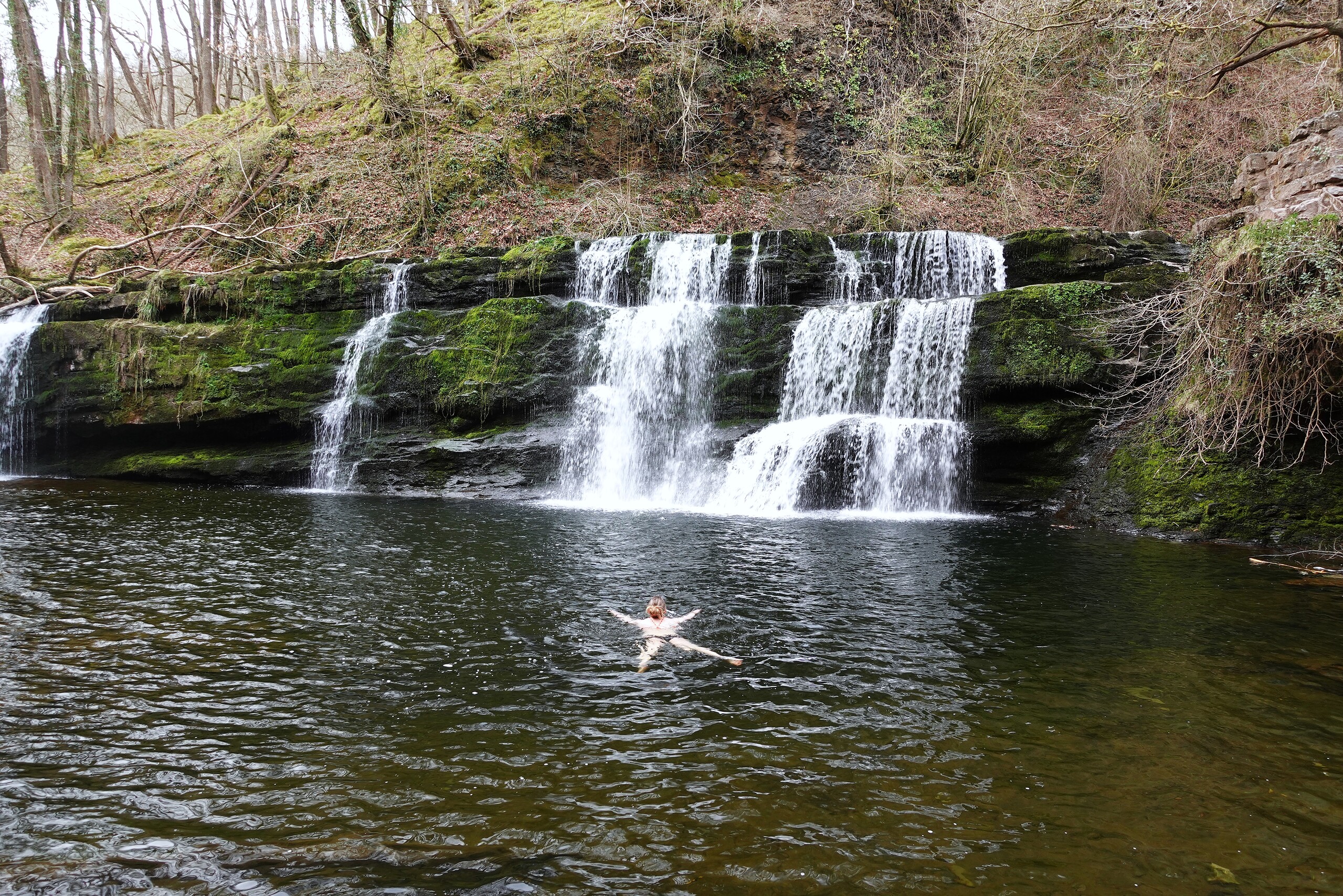
Gear Up: Winter Swimming Essentials
Dressing appropriately is key to a safe, comfortable winter swim:
- Swimmers: Everyone has a personal preference. Wetsuits are best for keeping out the cold but can be a bit of a buzz-kill (as well as a faff to get on and off). Neoprene bikinis and swimsuits are a great alternative. Whether you’re togged up head-to-toe or hitting the water in just your birthday suit, listening to your body for signs of cold is key.
- Neoprene gloves & boots and a warm hat: Fantastic for keeping extremities warm and preventing numbness.
- A toweling robe, a thermos of tea & a hot water bottle: For warming up post-swim.
- Optional safety gear: Tow floats, waterproof whistles and swim hats.
Sustainable gear is becoming increasingly popular – look for recycled neoprene options and plant-based Yulex whenever possible.
Preparing body and mind for cold water
Cold water isn’t just a physical challenge, it’s a mental one. For each cold-water dip:
- Practice controlled breathing exercises to manage the initial cold-water shock. Some swimmers sing or hum as they enter the water to help regulate their breathing and avoid the ‘gasp-reflex’.
- Move in the water by swimming or treading water to maintain circulation and generate body heat
- Remember to enjoy the experience. Some moments may feel like an endurance test but you’ll
feel good soon…hold on to that!
Full moons and sunsets: the best times for winter wild swimming
Winter wild swimming comes with a unique advantage – early darkness and dramatic skies. It’s the perfect season to choose spectacular backdrops for your swims:
- Moonlit swims: Plan a full moon swim on a crisp, clear night. Gliding through the water in the silvery moonlight is an entirely unique experience.
- Sunrises and sunsets: Winter skies offer some of the most vivid and dramatic colours for early-morning or late-afternoon swims.
- Frost and mist: Embrace the beauty of frost-covered landscapes and rivers shrouded in morning mist, adding a magical winter touch to your swim.
Winter weather adds unique challenges and potential dangers for swimmers. Be sure to check the safety tips recommended above and always swim with someone else, especially after dark.
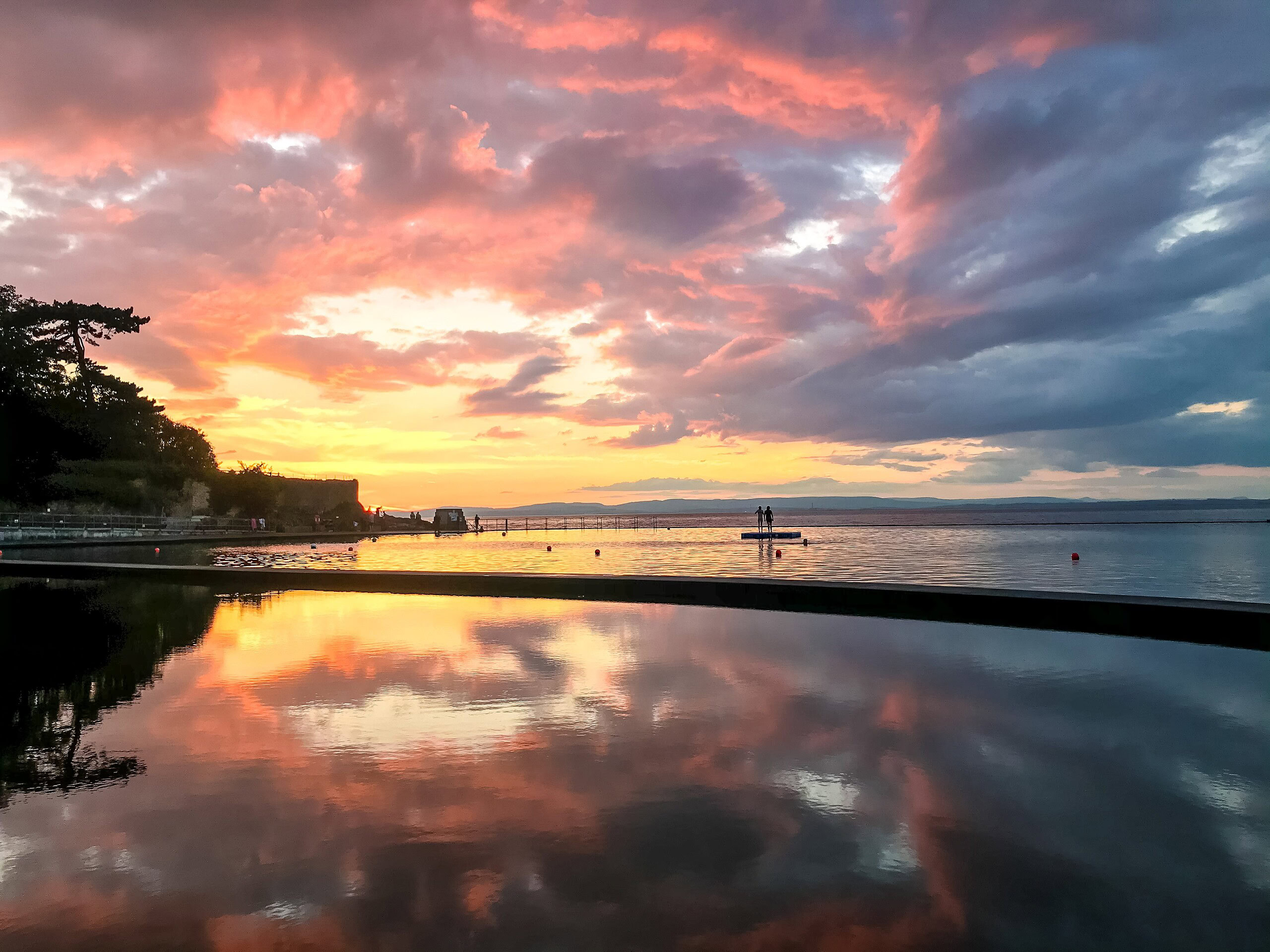
The added perks: extra benefits to winter wild swimming
Winter wild swimming comes with a few extra perks… those
added bonuses that really make a swim special.
- Sauna: One of winter wild swimming’s greatest perks is getting toasty warm in a sauna. Whether before, during, or after your swim, the contrast with icy air and cold water, feels utterly indulgent and restorative.
Take a look at Wild Sauna for some of the greatest sauna experiences - Hot drinks: A flask of steaming tea or coffee after your swim warms you from the inside out.
- Quiet waters: Winter brings peace and solitude – swim spots are often empty, giving you space to relax mind, body and soul.
- Extra buzz: Cold water feels sharper in winter, boosting the invigorating post-swim adrenaline and leaving you refreshed and exhilarated.
Notable dates for winter swimming
Of course, everyday could be a swimming day, but there are a few notable dates through winter which are particularly popular or hold a particular significance.
- New Year’s Day: Kick off the year with an invigorating dip in icy waters, a time-honoured tradition for wild swimmers.
- Christmas Day: Embrace a festive refreshing swim that’s become a seasonal ritual for many winter swimmers.
- Winter Solstice (around 21st December): Celebrate the shortest day of the year with a symbolic, energising swim as you welcome longer daylight.
- Full Moons: Swim under the magical silvery glow of a full moon for an unforgettable winter experience.
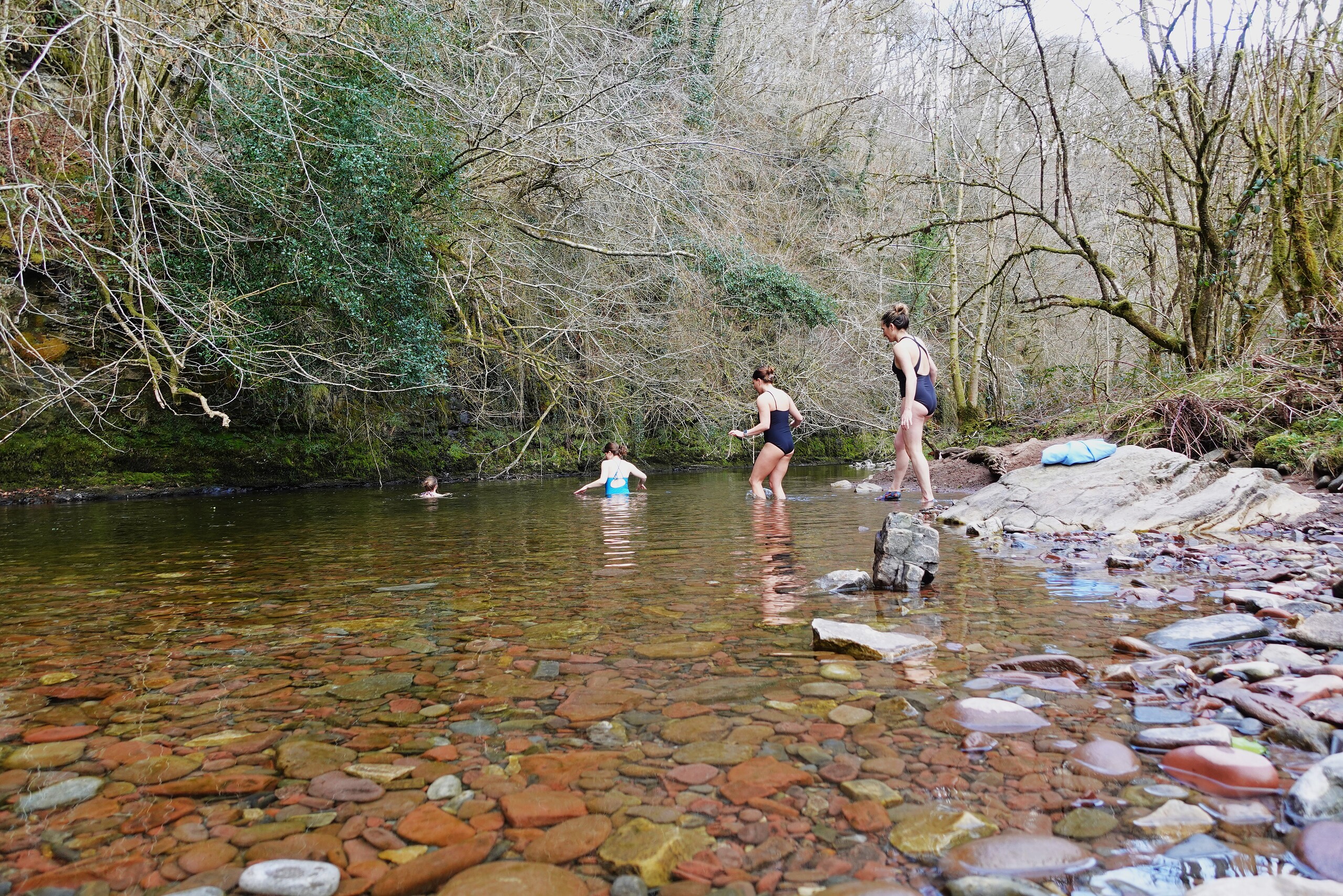
Winter Wild Swimming: Dive In
Winter wild swimming isn’t just a thrill, it’s a way to connect with nature, improve wellbeing and experience water in a completely different way. Crisp mornings, frosty landscapes and quiet waters make winter swims uniquely rewarding.
With the right gear and safety precautions, anyone can enjoy cold-water immersion. Plan swims around full moons, sunrises, sunsets, or key dates like Christmas, New Year’s Day, and the winter solstice to make the experience even more memorable.
Whether you’re looking for an adrenaline boost, mental clarity, or a moment of calm, winter wild swimming offers a refreshing, invigorating way to get outside, feel alive and embrace the season.
For those seeking even more inspiration, the new 2025 third edition of Wild Swimming Britain is a must-read guide to the UK’s best swimming spots and seasonal adventures, now with over 1000 locations.

